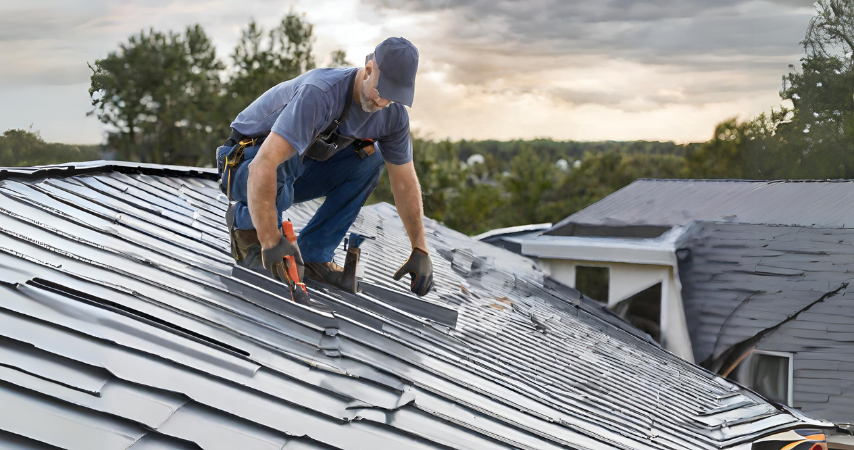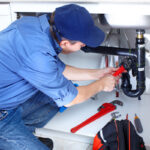Roof ventilation is often overlooked, yet it plays a crucial role in maintaining the longevity of a roofing system and the overall comfort of a home. Many homeowners focus on roof repair or roof replacement but fail to recognize the importance of airflow in preserving their investment. A well-ventilated roof helps regulate temperature, prevent moisture buildup, and improve energy efficiency.
Without proper ventilation, a home can suffer from a range of problems, including excessive heat, mold growth, ice dams in winter, and premature roof deterioration. Poor ventilation can also lead to higher energy bills, as heating and cooling systems work harder to maintain indoor temperatures.
Best Choice Roofing of Hudson Valley understands that a durable and energy-efficient roof starts with proper ventilation. By ensuring the right balance of airflow, homeowners can protect their roofing system and reduce long-term maintenance costs. Here’s why roof ventilation matters and how it benefits your home.
1. The Purpose of Roof Ventilation
Roof ventilation is designed to allow air to flow in and out of the attic, preventing the buildup of excess heat and moisture. This system works year-round to maintain a stable indoor environment.
How Roof Ventilation Works:
- Intake Vents: Typically located along the soffits or eaves, these vents allow cool, fresh air to enter the attic.
- Exhaust Vents: Positioned along the ridge or near the peak of the roof, these vents let hot, moist air escape.
- Balanced Airflow: A properly designed ventilation system ensures continuous movement of air, keeping temperatures and humidity levels in check.
When installed correctly, ventilation prevents a variety of issues that can compromise both the roof and the home’s interior.
2. Preventing Excessive Heat Buildup in Summer
During hot weather, attics can become extremely hot, with temperatures reaching 150°F or higher if there is inadequate airflow. This excess heat can radiate down into living spaces, making it harder to keep the home cool.
How Poor Ventilation Affects the Home in Summer:
- Higher Energy Costs: HVAC systems work harder to cool down overheated spaces, leading to increased electricity bills.
- Roofing Material Damage: Prolonged exposure to extreme heat can cause asphalt shingles to dry out, crack, and lose granules.
- Uncomfortable Indoor Temperatures: Rooms on upper floors may feel significantly warmer than lower levels, creating uneven cooling.
Solution:
A well-ventilated roof allows hot air to escape, reducing the strain on air conditioning systems and preserving the lifespan of roofing materials.
3. Reducing Moisture Buildup and Preventing Mold
Moisture buildup is one of the biggest threats to a roof’s structural integrity. Without proper ventilation, warm, moist air from household activities—such as cooking, showering, and laundry—gets trapped in the attic, creating an ideal environment for mold and mildew growth.
Signs of Moisture Problems in the Attic:
- Condensation on rafters or insulation
- A musty odor or visible mold growth
- Warped wood or peeling paint on ceilings and walls
Why This Matters:
- Mold and mildew can spread quickly, leading to costly remediation and health risks.
- Excess moisture can cause wood rot, weakening the roof decking and structural supports.
- Insulation can become wet and lose effectiveness, making the home less energy efficient.
Solution:
Proper ventilation ensures moisture-laden air is expelled, keeping the attic and roof dry year-round.
4. Preventing Ice Dams in Winter
Ice dams occur when warm air in the attic causes snow on the roof to melt. As the melted snow reaches the colder eaves, it refreezes, forming ice that prevents proper drainage. This trapped water can seep under shingles and into the home.
Consequences of Ice Dams:
- Water Damage: Leaks can ruin ceilings, walls, and insulation.
- Shingle and Gutter Damage: The weight of ice can tear off gutters and damage roofing materials.
- Structural Issues: Repeated ice damming can weaken the roof over time.
Solution:
Adequate ventilation keeps attic temperatures stable, preventing uneven melting and reducing the risk of ice dam formation.
5. Extending the Life of Roofing Materials
Roofs are a major investment, and proper ventilation helps maximize their lifespan. Excess heat, trapped moisture, and poor airflow accelerate wear and tear on roofing materials.
How Poor Ventilation Shortens Roof Life:
- Heat exposure causes shingles to age prematurely.
- Moisture buildup leads to rot and deterioration of roof decking.
- Metal components, such as flashing and nails, corrode faster in humid conditions.
Solution:
By maintaining balanced airflow, homeowners can prevent premature roof replacement and avoid costly repairs.
6. Improving Energy Efficiency
A well-ventilated roof can significantly reduce heating and cooling costs. When attic temperatures are properly regulated, less energy is needed to maintain comfortable indoor conditions.
Energy-Saving Benefits of Proper Ventilation:
- Prevents heat from accumulating in the attic, reducing the need for excessive air conditioning.
- Helps insulation perform effectively by keeping moisture levels low.
- Reduces HVAC system wear and tear, extending the life of heating and cooling equipment.
Solution:
Investing in proper roof ventilation can lead to long-term savings on utility bills and home maintenance costs.
7. Common Types of Roof Ventilation Systems
There are several ventilation options available, each designed to meet different roofing and attic configurations.
Most Common Ventilation Types:
- Ridge Vents: Installed along the peak of the roof, allowing hot air to escape.
- Soffit Vents: Located under the eaves, allowing cool air to enter.
- Gable Vents: Positioned at the ends of the attic to promote cross-ventilation.
- Turbine Vents: Use wind power to pull hot air out of the attic.
- Powered Attic Fans: Electrically driven vents that force air circulation.
Choosing the Right System:
A roofing professional can assess a home’s ventilation needs and recommend the best system for optimal airflow.
8. How to Tell If a Roof Has Poor Ventilation
Many homeowners don’t realize their roof has ventilation issues until noticeable problems arise.
Warning Signs of Poor Ventilation:
- High energy bills due to heat retention.
- Excessive attic heat or humidity.
- Frequent ice dams in winter.
- Mold growth or musty odors in the attic.
- Peeling paint or warped siding near the roofline.
Solution:
A professional roof inspection can determine whether a home’s ventilation system is functioning properly and recommend improvements if necessary.
Final Thoughts
Proper roof ventilation is essential for protecting a home, maintaining energy efficiency, and extending the lifespan of roofing materials. Without adequate airflow, homeowners may face moisture damage, excessive heating and cooling costs, and premature roof deterioration. Investing in a well-ventilated roof ensures long-term protection and prevents costly repairs down the road.
For those concerned about their roof’s ventilation, consulting with an experienced roofing company is a smart decision. Best Choice Roofing Hudson Valley helps homeowners optimize their roof’s ventilation, ensuring durability, efficiency, and overall home comfort. A properly ventilated roof is not just an upgrade—it’s a necessity for long-term performance and savings.







